The second-smallest and most densely-populated country in the world is renowned as a tax haven, priding itself as a louche playground for the planet’s wealthiest people.
Monaco is packed tight against the Mediterranean by high coastal hills, giving it a dramatic profile that can’t be mistaken for anywhere else.
The principality has reclaimed a whole quarter of its landmass from the sea itself, and has always made the most of its rocky terrain, as you’ll see at the vertiginous Rock of Monaco, home to the ruling Grimaldi family since the 13th century.
For all its decadence and ill-repute there’s an irresistible allure to Monaco, conjuring images of Belle Époque opulence, James Bond, Princess Grace, the Jet Set and what must be the world’s premier motor race.
1. Prince’s Palace of Monaco
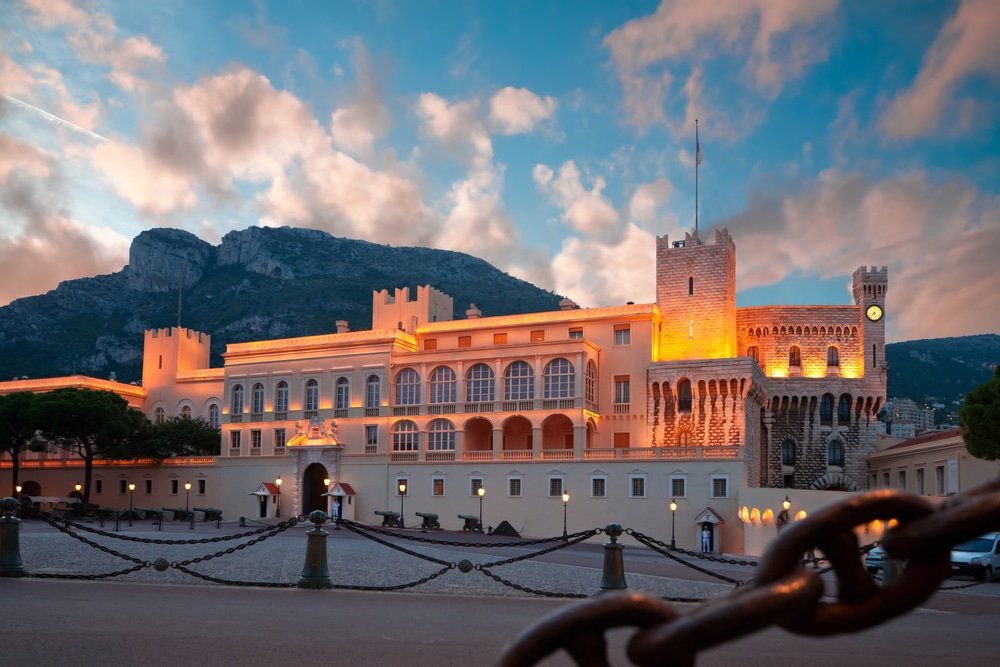 Source: Migel / shutterstock
Source: Migel / shutterstockThe official residence of the Prince of Monaco is adapted from a stronghold built by the Genoese in the 12th century, surmounting the historic Rock of Monaco.
Apart from occasional hiatuses, such as after the French Revolution, the Grimaldi family have lived in this very place since they captured it in 1297.
One of many intriguing things about the site is that while the apartments and interiors were imbued with Louis XIV-style luxury in the 17th century, the palace maintained its defensive outer appearance because it continued to be fortified up to 1793 when it was handed over to France.
This 200-hectare complex remains Prince Albert II’s private residence and workplace, but you can tour the state apartments in spring and summer.
You’ll reach them from the Palace Courtyard via the a 13th-century double staircase in Carrara marble, leading to the Mirror Gallery, where heads of state are received.
From there you’ll pass through the York Room, Yellow Room, Blue Room, Throne Room and Mazarin Salon, all suffused with interesting stories and lushly decorated.
You’ll be dazzled by frescoes from the 16th, 17th and 18th century, silk brocade, Italian giltwork chandeliers and floors inlaid with Carrera marble.
Website: https://www.palais.mc/
2. Oceanographic Museum of Monaco
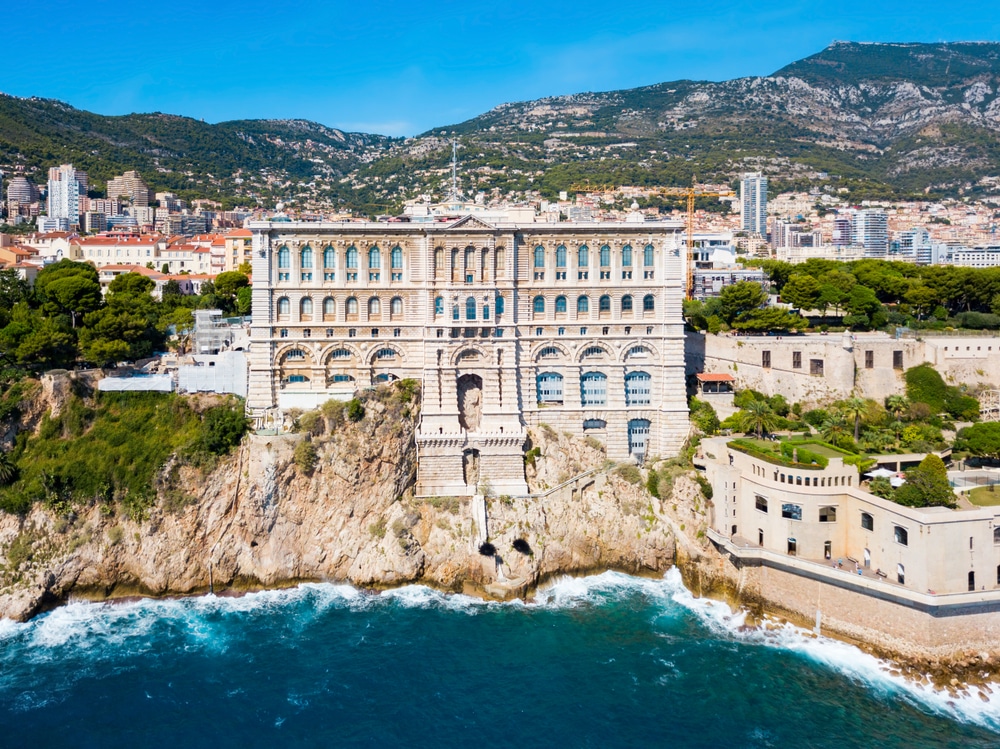 Source: saiko3p / shutterstock
Source: saiko3p / shutterstockPrince Albert I (1848-1922) pursued the life of a navigator and cultivated a deep interest in the oceans. His brainchild, and one of Monaco’s breathtaking monuments is the Oceanographic Museum, built into the side of a cliff 85 metres high.
The tall, narrow building has a neo-Baroque design and must go down as one of the most visually spectacular museums in the world. It all houses 100 aquarium tanks for 6,000 aquatic specimens from more than 350 species.
From 1957 to 1988 the museum’s director was none other than Jacques Cousteau, the world-renowned explorer, conservationist and inventor.
At the aquariums you’ll get within inches of sharks and piranhas and can study seahorses, octopuses, moray eels, clownfish and stonefish in vivid detail.
Selections from the museum’s gigantic holdings are presented at the Whale Room, Prince Albert I Room and Oceanomania where you can marvel at complete marine mammal skeletons, rare books, antique diving equipment, fossils, models, photographs and much more.
Website: https://musee.oceano.org/
3. Casino de Monte-Carlo
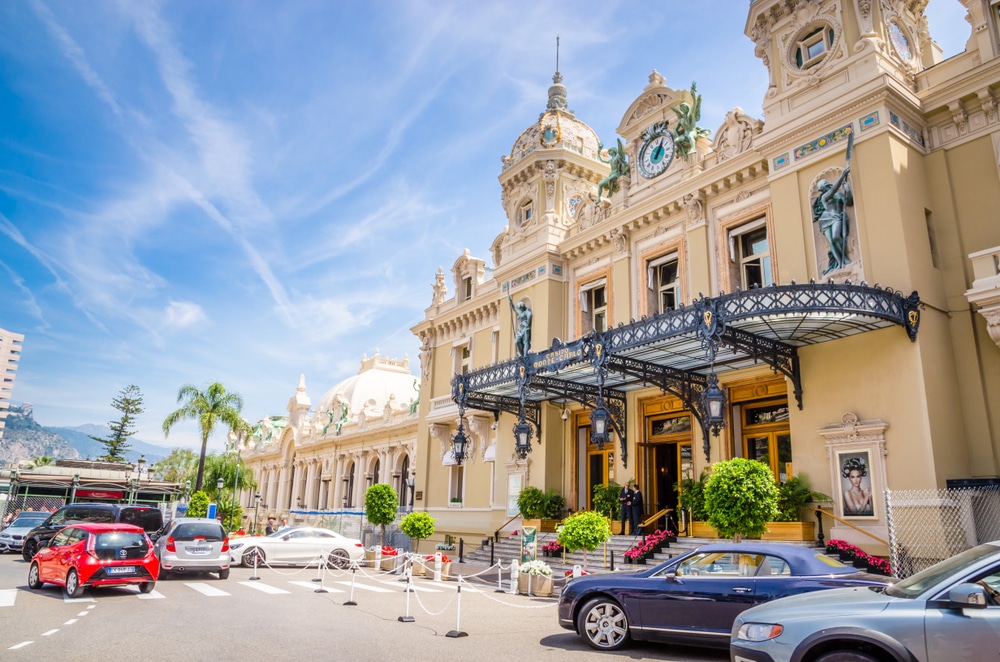 Source: Olena Z / shutterstock
Source: Olena Z / shutterstockSay the word “casino” and many minds will go to the Casino de Monte-Carlo, which epitomises old-world glamour and class with its Beaux-Arts design.
A bewildering array of historic figures have climbed these steps, from Harpo Marx to Elizabeth Taylor, Mata Hari and Francis Bacon.
Gaming is one of the principality’s big sources of revenue, and the original casino was a solution to the ruling family’s cash flow problems in the mid-19th century.
It was François Blanc (1806-1877) who made the casino a success, and he oversaw the development of the complex as we know it, with successive expansions and makeovers in the 1870s and 80s by Charles Garnier (1825-1898), famed for the Palais Garnier in Paris.
At the Casino de Monte-Carlo well-dressed gamblers can dabble in table and slot games in splendid halls with chandeliers, gilded stuccowork, frescoes and damask wall hangings.
The croupiers are trained to provide a world-class experience and even the gaming tables are crafted by the world’s top artisans. Afterwards you can skulk off to the balustraded terrace behind, where one of the finest views on the Riviera awaits.
Website: https://www.montecarlosbm.com/en/casino-monaco/casino-monte-carlo
4. Place du Casino
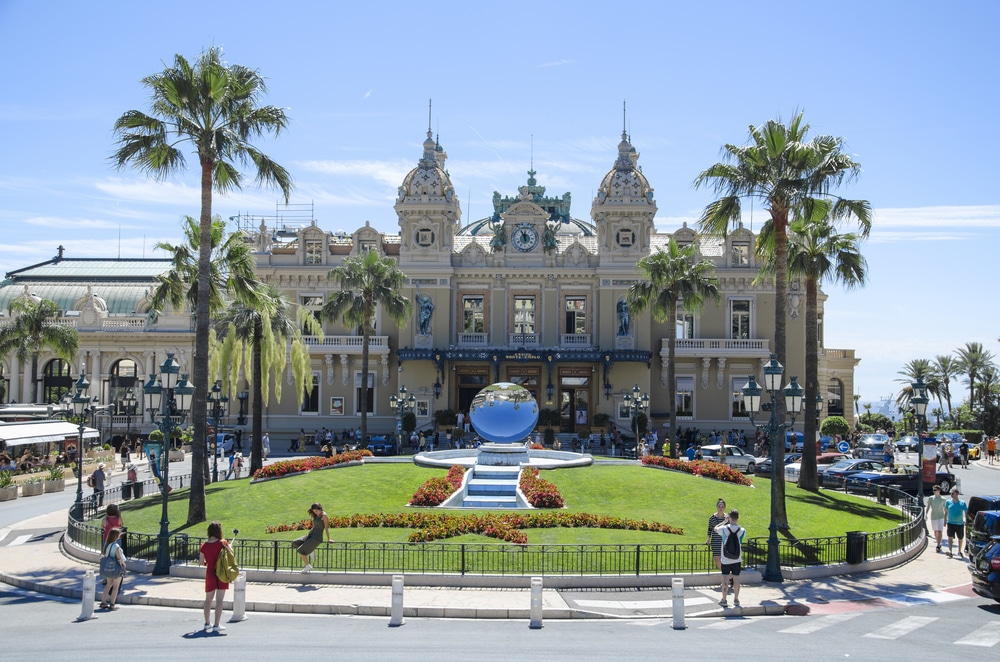 Source: Kia Toivonen / shutterstock
Source: Kia Toivonen / shutterstockThis monumental plaza, enclosed by casinos, exclusive restaurants and ultra-posh boutiques, will be familiar to all.
Place du Casino is an integral part of the Grand Prix circuit, while fans of James Bond will be especially well-acquainted with a backdrop that appeared in both Never Say Never Again (1983) and GoldenEye (1996).
Without altering the racing circuit or removing the line of luxury cars by the casino steps, the plaza has been totally revamped in the last few years.
The grassy knoll, or “Camembert” at the centre has been removed, replaced by a paved modern plaza where you can fully appreciate the Belle Époque splendour of the Casino, Hôtel de Paris Monte-Carlo, Opéra de Monte-Carlo and the regal terrace of the Casino Café de Paris.
In a circular basin at the heart of the plaza, bordered by palms is Anish Kapoor’s Sky Mirror, a modern centrepiece for the square.
5. Harbour of Monaco (Port Hercule)
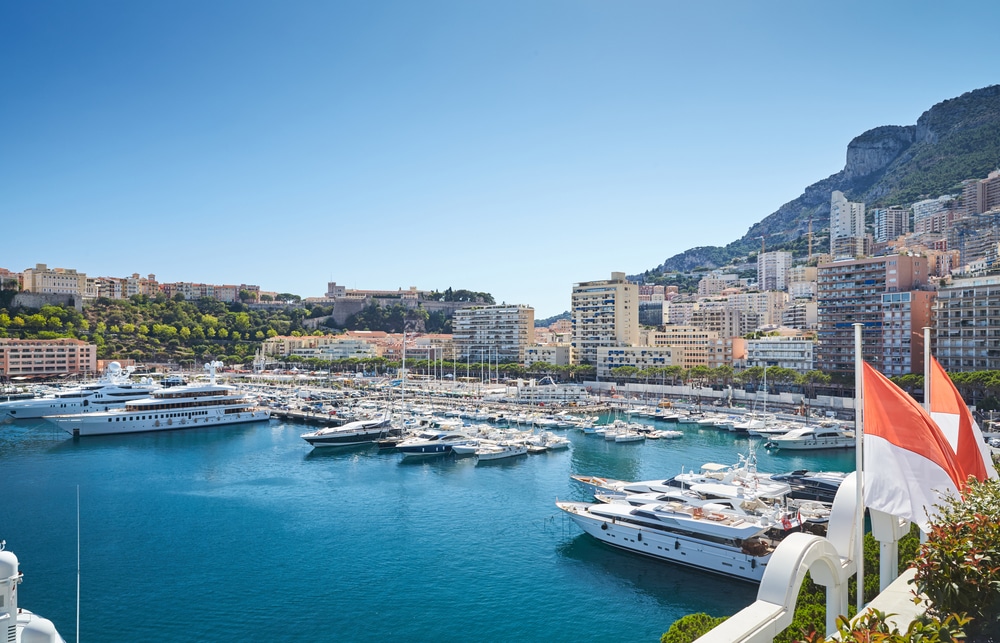 Source: Drozdin Vladimir / shutterstock
Source: Drozdin Vladimir / shutterstockThis expansive port, framed by tower blocks and rocky slopes is one of the principality’s most famous images.
The harbour has been used since the days of the Phocaeans, 2,500 years ago, but was expanded as part of a slew of modernisation projects spearheaded by Prince Albert I in the early 20th century.
Port Hercule, to use its official name, was ready in 1926 after 25 years of construction and was updated in the 1970s. That ample space between the two quays is more than 16 hectares, and provides anchorage for some of the most expensive yachts on the planet.
There are berths for over 700 vessels at Port Hercule, and every October and November the quays are the setting for the Foire de Monaco, with fairground rides and amusements.
6. Grand Prix – when it isn’t on, Fairmont Hairpin
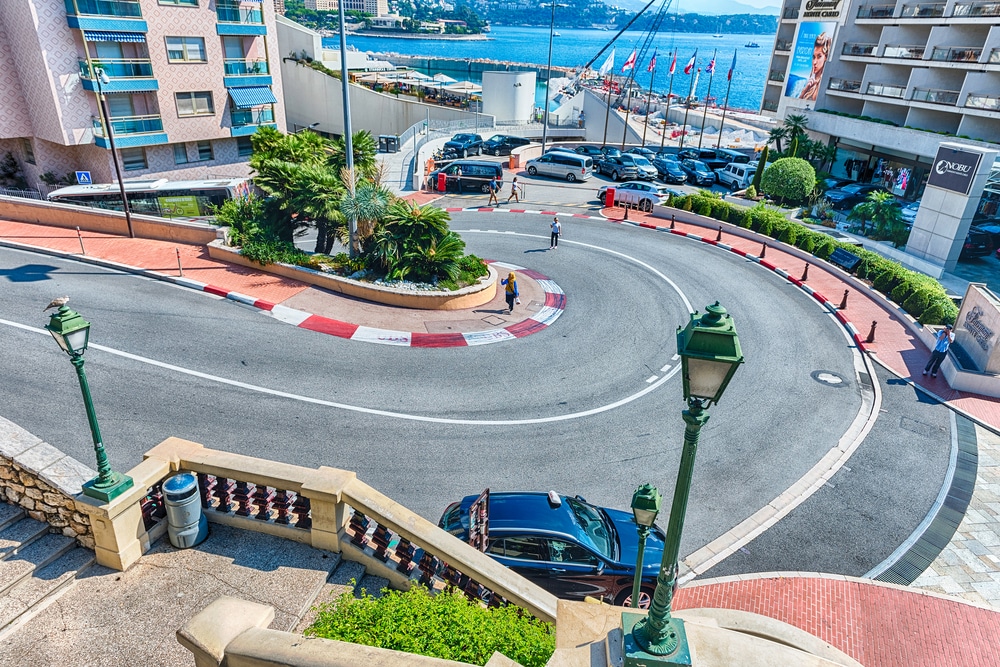 Source: Marco Rubino / shutterstock
Source: Marco Rubino / shutterstockWhen you look at Monaco’s topography and streetscape the idea of Formula 1 cars hitting speeds of more than 180 mph on these tangled lanes inspires anxiety.
And yet the Monaco Grand Prix is surely the most famous street race around, helping to relay the principality’s landmarks and cityscape to a worldwide audience.
Running up to the Place du Casino in Monte-Carlo and then down to the harbour-front in La Condamine, it poses the ultimate test for drivers with its tight turns and myriad gear changes.
After several years of careful planning, the first Grand Prix took place under the auspices of Louis II in 1929 long before there was even an F1 championship.
The race is invariably run on the last weekend of May, when the city is heaving but has an ambience that every motorsport fan needs to experience at least once in their life.
Come at any other time and you can seek out the track’s signatures, like the Fairmont Hairpin, the Nouvelle Chicane and the tunnel on Boulevard Louis II.
Website: https://www.formula1monaco.com/
7. Vieux Monaco (Rock of Monaco)
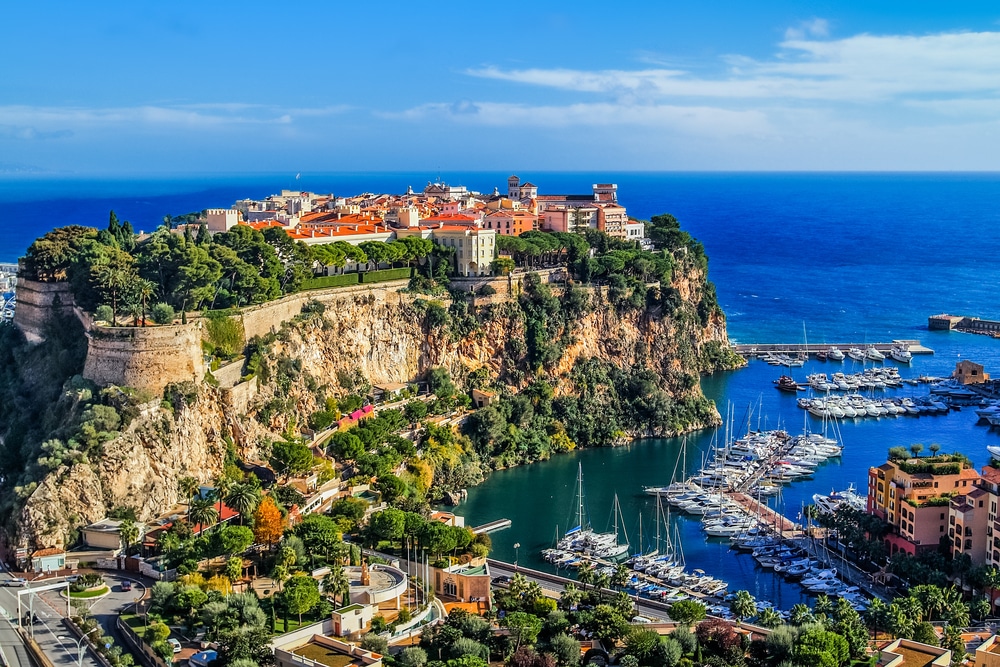 Source: OSTILL is Franck Camhi / shutterstock
Source: OSTILL is Franck Camhi / shutterstockThe oldest of the principality’s four quarters has a dramatic, fortified position atop 62-metre cliffs, almost completely surrounded by the Mediterranean.
You’ll reach the old town via the steep and snaking Rampe de la Major, passing through a 15th-century gate and then standing in front of the Prince’s Palace.
From there you can soak up the views and head in to investigate the picturesque warren of streets walled by townhouses from the 1500s to the 1700s, painted in pastel tones. This is the setting for several of Monaco’s big attractions like the cathedral and oceanographic museum, but also lends itself to an aimless stroll.
On Rue Emile de Loth is the Museum of Old Monaco, a window on everyday Monegasque life in times past. In these galleries are day-to-day objects, uniforms, weapons as well as a rich collection of painting and sculpture.
8. Monaco Top Cars Collection
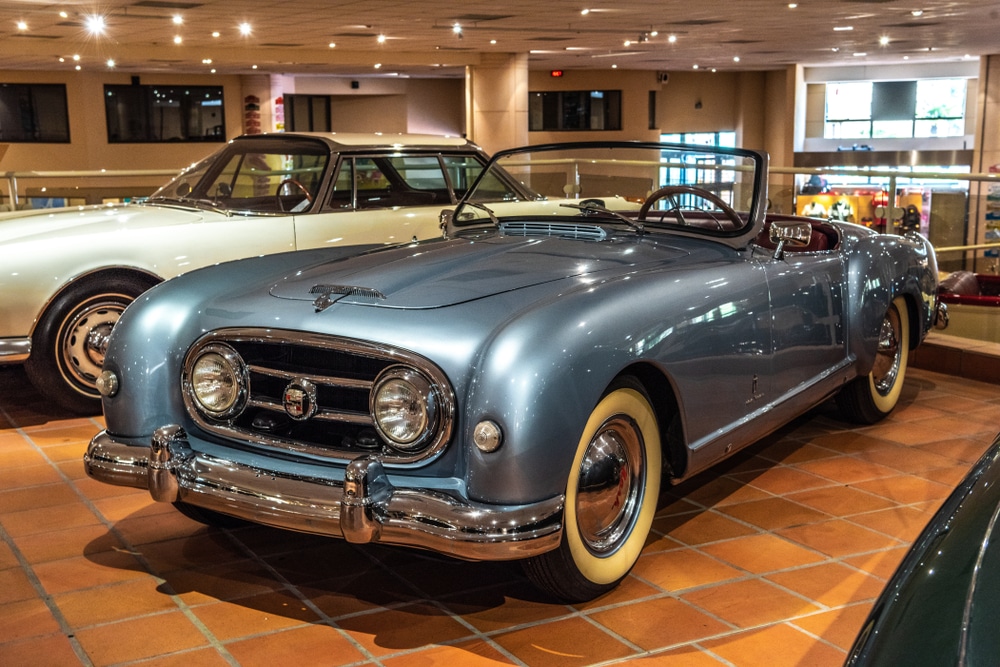 Source: Dmitry Eagle Orlov / shutterstock
Source: Dmitry Eagle Orlov / shutterstockYou better believe that the personal car collections of princes Rainier III and Albert II are something special.
These are on show across five levels in a purposely designed space that opened in 1993 in the Fontvieille district at the foot of the Rock of Monaco.
In the fleet are six historic coaches for Rainer III, as well as Formula 1 cars from the Monaco Grand Prix, cars from the Rally de Monte-Carlo and prestigious vehicles from marques as prestigious as Bugatti, Lamborghini, Ferrari, Maserati, Rolls-Royce, Cadillac, Hispano-Suiza and Bentley.
If you had to pick one outstanding exhibit from all these it might be the Bugatti Type 35 driven to victory by William Grover-Williams in the first ever Monaco Grand Prix in 1929.
9. Jardin Exotique de Monaco
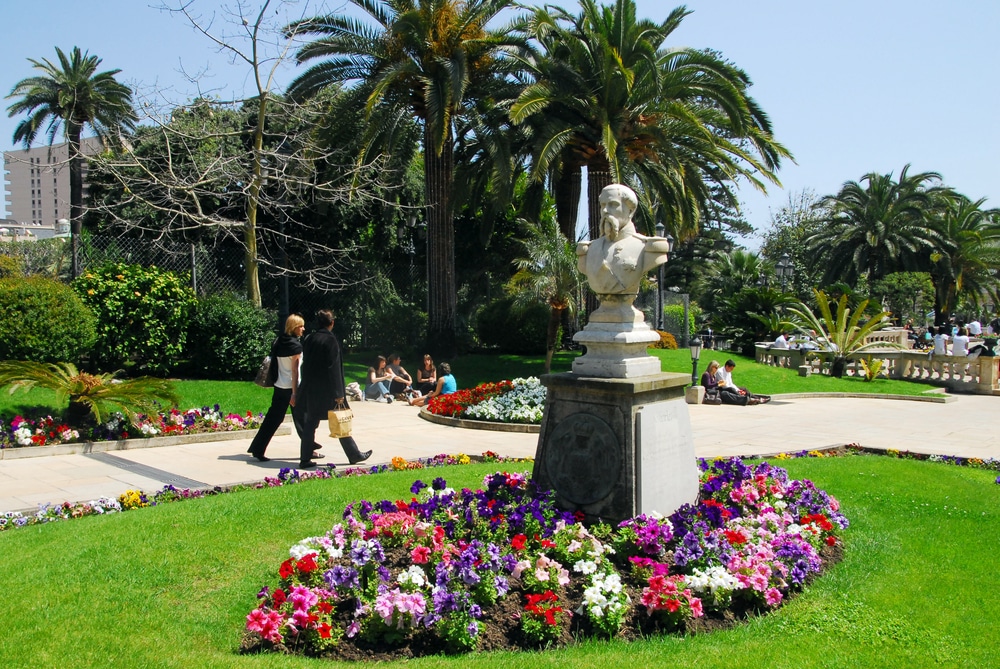 Source: ChameleonsEye / shutterstock
Source: ChameleonsEye / shutterstockHigh on the rocky cliffs that pin Monaco to the coast is a botanical garden plotted in the first decades of the 20th century.
This site was chosen for a collection of succulents brought back from Mexico in the 1860s. While the garden was being planted a cave was discovered at the base of the cliff, and the prehistoric discoveries made there can be seen in the museum, which we’ll talk about later in this list.
Opened in 1933, the Jardin Exotique has a sensational panorama of the principality, matched by curious succulents gathered across the Americas, as well as Africa and the Arabian Peninsula.
The cacti come into bloom in spring and summer, while the African crassulas and aloes are in flower in winter, there’s always a spectacle in the garden. The cave (Grotte de l’Observatoire) has magnificent concretions and can be viewed on a guided tour.
Website: https://www.jardin-exotique.mc/
10. Monaco Cathedral
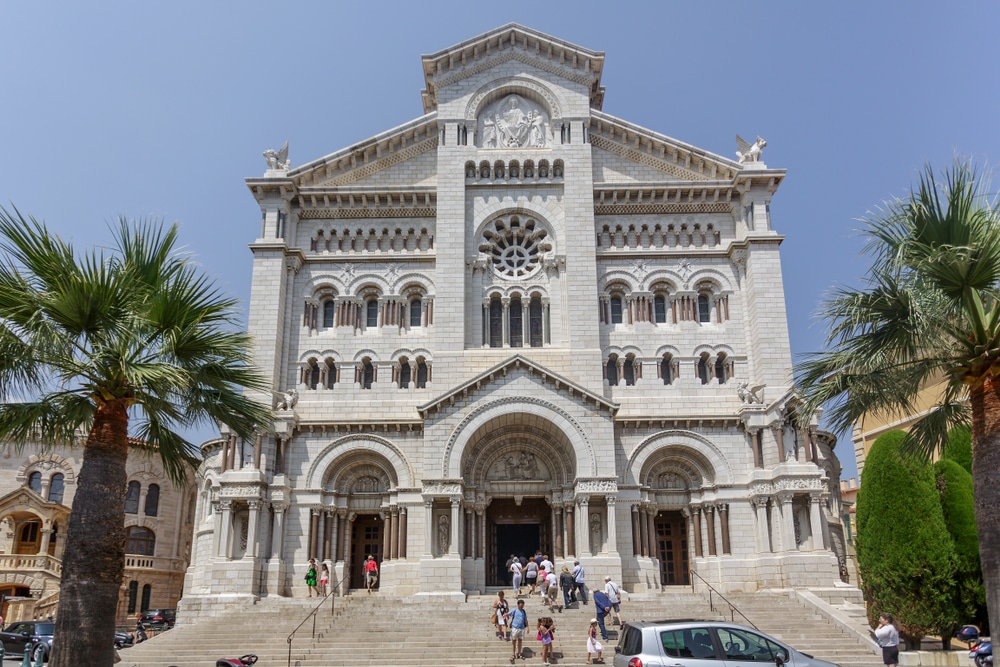 Source: Roka / shutterstock
Source: Roka / shutterstockThe striking main church of the Monegasque Diocese is a Roman-Byzantine building composed of white limestone quarried just over the border in La Turbie.
Although the current Monaco Cathedral went up in the last quarter of the 19th century it stands on the site of Monaco’s first parish church, raised in the middle of the 13th century.
Inside you can see elements from that earlier monument, including two altarpieces (Saint-Nicolas and Pietà du Curé Teste) from the very start of the 16th century.
Some of the modern features worth seeing are the nave and aisles’ stained glass windows, respectively depicting women figures from the Old Testament and the lives of Jesus and Mary, while the high altar has fine copper inlay and the episcopal throne is carved from white Carrara marble.
In the ambulatory are the tombs for the Grimaldi line, including Princess Grace and Rainer III who were married in the cathedral in 1956.
11. Japanese Garden
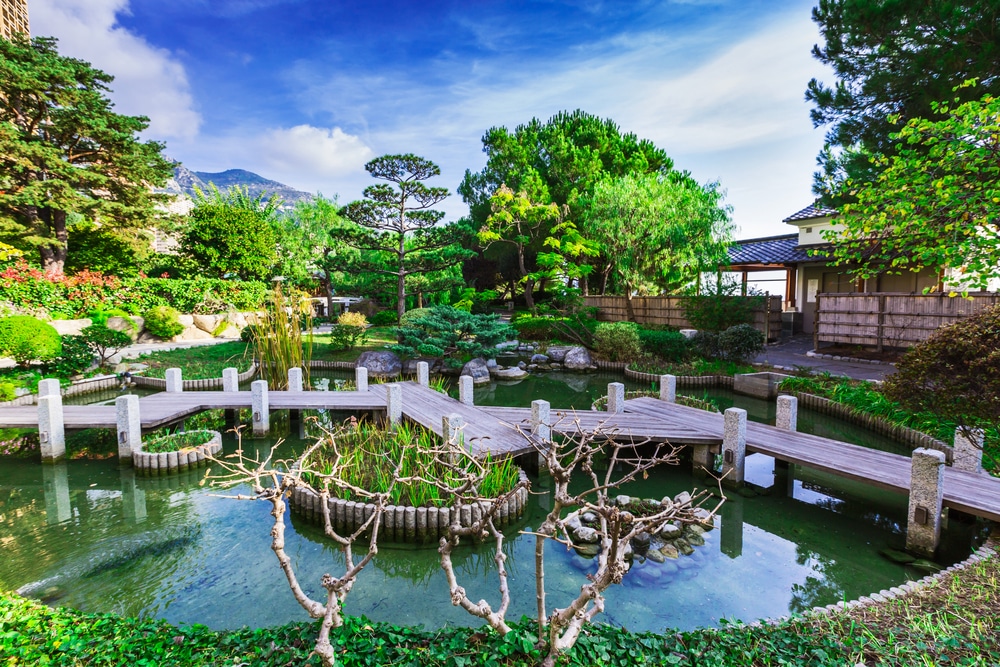 Source: Fishman64 / shutterstock
Source: Fishman64 / shutterstockLandscaped in 1994, this delightful garden in the Larvotto ward was created according to Shintoist principles by the award-winning landscape architect Yasuo Beppu.
What is captivating about this space is the way it mixes local and Japanese features. For instance, all of the plants are Mediterranean, and these olive, pine and pomegranate trees were carefully tended and clipped across three years by Beppu to give them a romantic Japanese profile.
The building material for the garden’s bridges, gate and teahouse are all Japanese, while the stone for the intricately designed waterfall were quarried in Auvergne, Corsica and in the valley of the nearby Tinée River.
Go slow to appreciate the Zen Garden with its raked gravel and the pond with lotus flowers, water lilies and a shoal of koi carp.
12. La Condamine
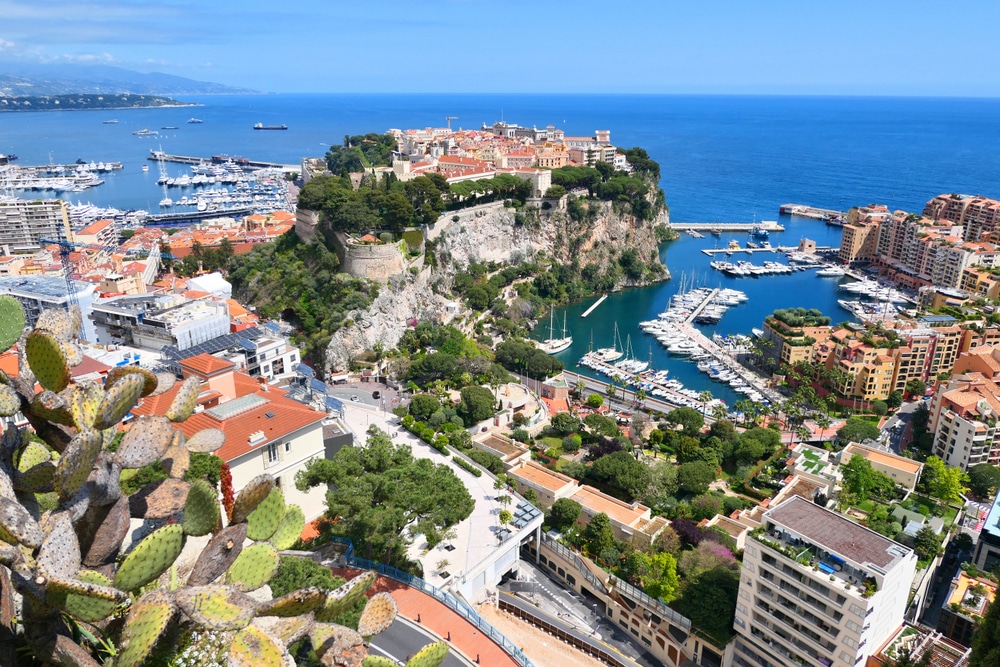 Source: Studio Barcelona / shutterstock
Source: Studio Barcelona / shutterstockBetween Vieux Monaco and Monte-Carlo is Monaco’s main ward and the place where you can best take the pulse of the principality.
La Condamine incorporates Port Hercule and cuts in up the rugged slope to the Jardin Exotique at the border.
Any visit to La Condamine has to begin on the Place d’Armes, where a morning market has traded since 1880. After browsing the stalls selling fruit, vegetables and more exotic specialties you can retreat to a cafe or restaurant table in the arcades on the square’s margins.
Close by is the start of the Rampe de la Major, taking you up to The Rock through a sturdy defensive gate from the 15th century.
In the other direction families can mosey up to Parc Princesse Antoinette, which has playground equipment as well as a miniature golf course among its century-old olive trees.
13. Place du Palais
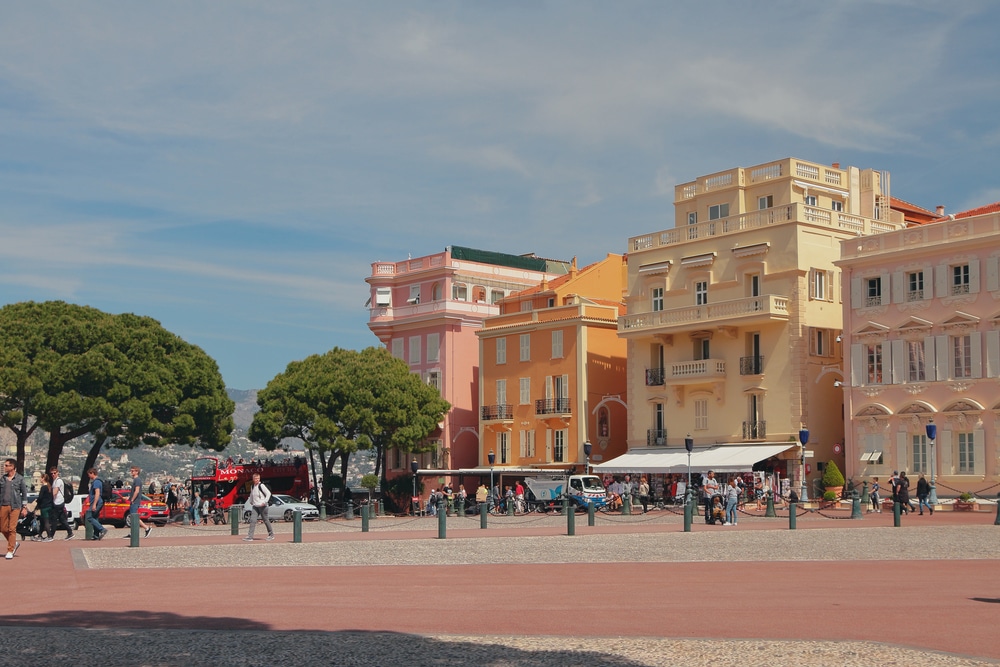 Source: photobeginner / shutterstock
Source: photobeginner / shutterstockAt the top of the Rampe de la Major you’ll come to the ceremonious square at the entrance to the palace.
This is where you can watch the changing of the guard ceremony, which we’ll cover in more detail later. At any other time you take a while to appreciate the row of cannons arming the palace facade and the fringes of the square, dating to the 17th and 18th centuries.
Beneath the Aleppo pines on the square’s south side is a vantage point with close to a bird’s eye view of the little harbour at Fontvieille, backdropped by those craggy coastal peaks.
From the fortifications on the north side there’s another wonderful vista across Port Hercule to Monte-Carlo.
14. Opéra de Monte-Carlo
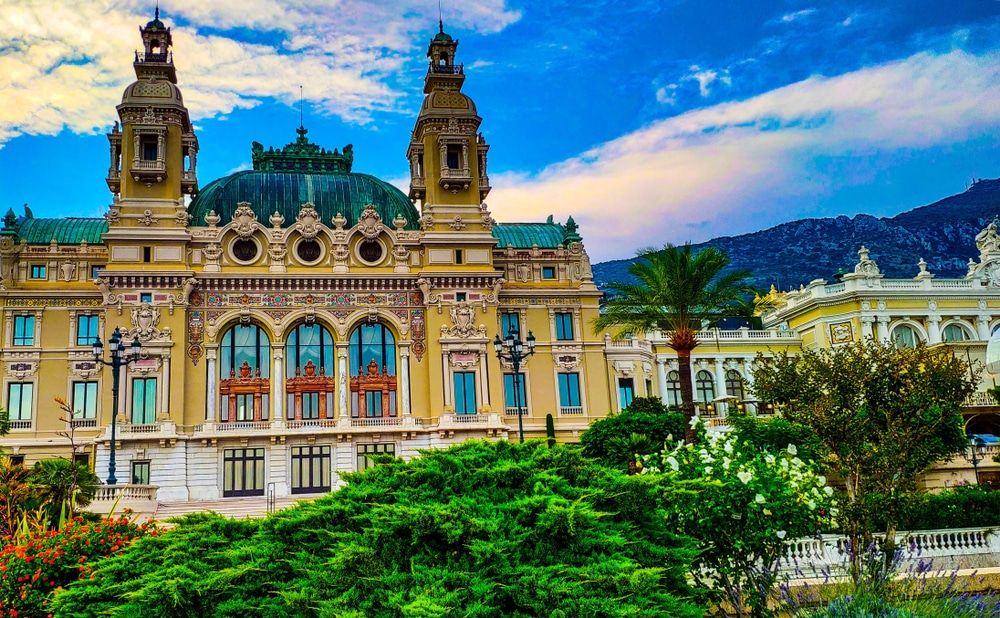 Source: Kovtun Aleksei / shutterstock
Source: Kovtun Aleksei / shutterstockPart of that grand ensemble on Place du Casino, the Eclectic Opéra de Monte-Carlo was built in the 1870s at the behest of Prince Charles III to answer a call for more cultural diversions in the principality.
Charles Garnier also conceived this ornate building, and the venue was inaugurated in 1879 with a performance by Sarah Bernhardt.
Some of the opera stars to take the stage at the Salle Garnier in those first few decades include Nellie Melba, Enrico Caruso, Mary Garden, Titta Ruffo and Geraldine Farrar.
As a small venue with a small company, that golden age is in the past, but there’s still a season with up to six operas.
In September the Salle Garnier is the main stage for the Monte-Carlo Jazz Festival, and throughout the year there are concerts by prominent recording artists, among them Patti Smith, Prince, Lana del Rey, Jane Birkin and Lionel Ritchie in the last decade.
15. Casino Café de Paris
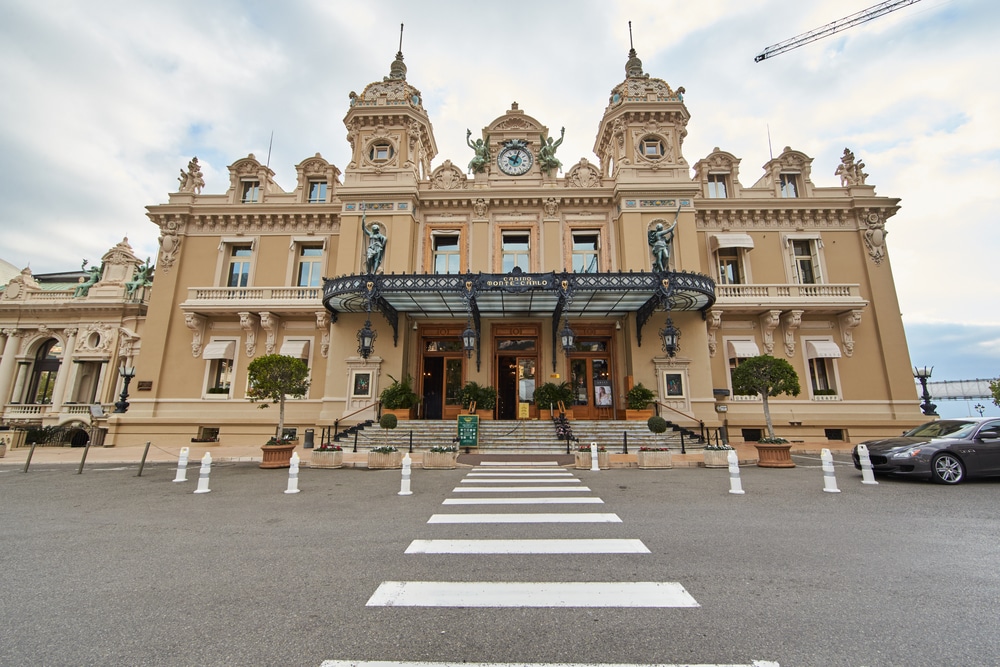 Source: Drozdin Vladimir / shutterstock
Source: Drozdin Vladimir / shutterstockOn Place du Casino, the contemporary partner to the old-worldly Casino de Monte-Carlo is the frenetic, sensory overload of the Casino Café de Paris.
This is a kind of adrenaline-pumping slot heaven, housing 480 cutting-edge machines, as well as a host of other electronic games. Table games aren’t neglected, and you’ve got French and American roulette, Blackjack, Ultimate Texas Hold’em and Punto Banco.
There’s an electric atmosphere and modern decor, primed for casual gamers, even though the jackpots are the highest on the French Riviera.
The hospitality is also a touch of Monte-Carlo class, with little perks like breakfast early in the day, afternoon tea or cocktails in the evening.
Website: https://www.montecarlosbm.com/en/casino-monaco/casino-cafe-de-paris
16. New National Museum of Monaco
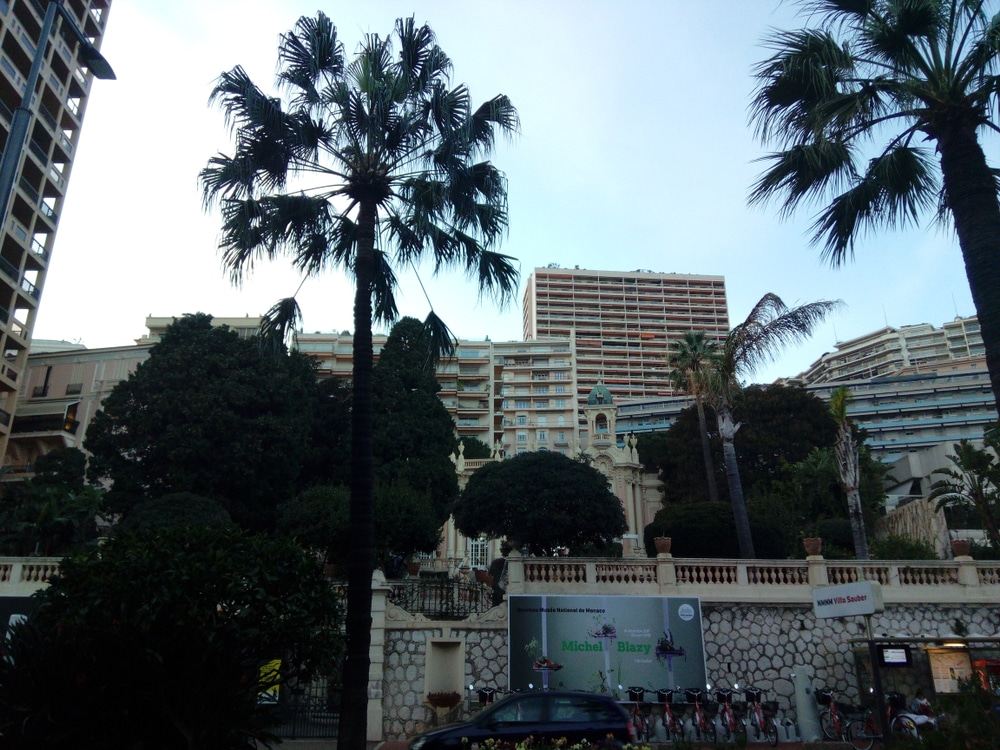 Source: David Vioque / shutterstock
Source: David Vioque / shutterstockTwo stately properties, Villa Sauber and Villa Paloma, host temporary contemporary art exhibitions under the banner of the New National Museum of Monaco.
The former is among Monaco’s last Belle Époque residences and in 1904 became the studio for the British painter Robert Sauber (1868-1936). The Neoclassical Villa Paloma is the museum’s primary venue, built in 1913 for the American Edward N. Dickerson and restored after damage in the Second World War.
A beautiful feature is the entrance hall’s stained glass, fitted by Niçois master glazier Fassi Cadet, who also restored the windows for the famous Sainte-Dévote Chapel.
Exhibitions are both thematic and solo, and recent shows have featured the work of Alfredo Volpi, Joan Miró, Pierre Le-Tan, Latifa Echakhch and Ettore Spalletti.
Website: http://www.nmnm.mc/
17. Sainte-Dévote Chapel
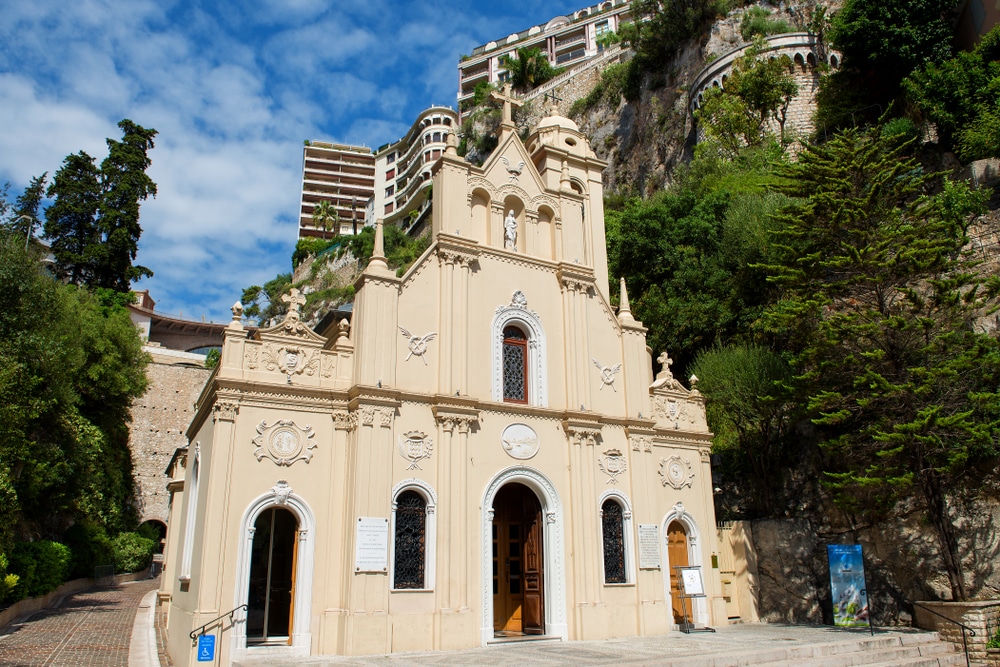 Source: Ingo70 / shutterstock
Source: Ingo70 / shutterstockAnother landmark made world-famous by the Grand Prix, this chapel gives the name to the circuit’s first corner.
But more than that, the Sainte-Dévote Chapel is dedicated to the principality’s patron saint (St Devota) and stands at the spot where around 303 CE it is thought that a boat carrying the body of the saint ran aground.
On the eve of her feast day, January 26, a wooden fishing boat is burnt after sunset in a time-honoured votive ceremony on the square in front. This relates to a story in which the saint appeared to the Monegasques to give them the strength to repel a Genoese siege in 1507.
As for the building, this has a history reaching back at least as far as the 11th century and has gone through several enlargements over the last 1,000 years.
The current facade dates to 1871 and has three medallions depicting the life of the saint. Inside there’s a shrine containing Devota’s relics on the altar.
Website: https://www.saintedevotemonaco.com/
18. Princess Grace Rose Garden
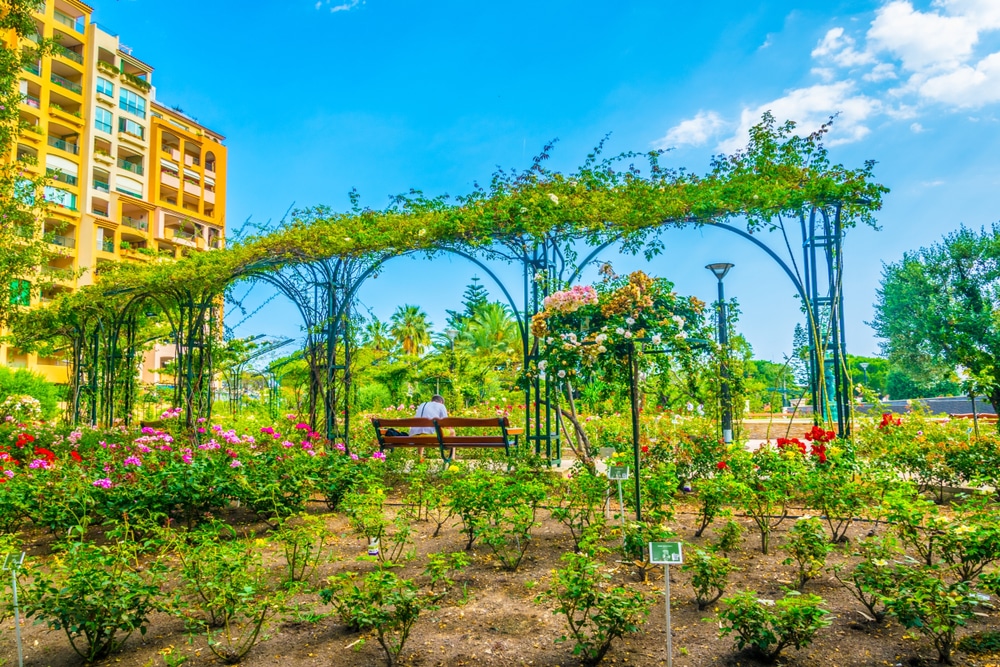 Source: trabantos / shutterstock
Source: trabantos / shutterstockAn enclave of Fontvieille Park, in the namesake district to the south of the principality, Princess Grace Rose Garden was inaugurated in 1984, two years after Grace Kelly died.
The garden is enclosed by gates sporting H.S.H. Princess Grace’s monogram, and in an English layout is planted with 6,000 rose bushes from more than 315 varieties. These are all organised according to seven distinct themes.
Standing over the scene is a statue of Kelly carved by Dutch sculptor Kees Verkade. In a recent update an interactive terminal was installed at the garden’s entrance allowing you to identify and locate the individual rose bushes.
19. Museum of Prehistoric Anthropology
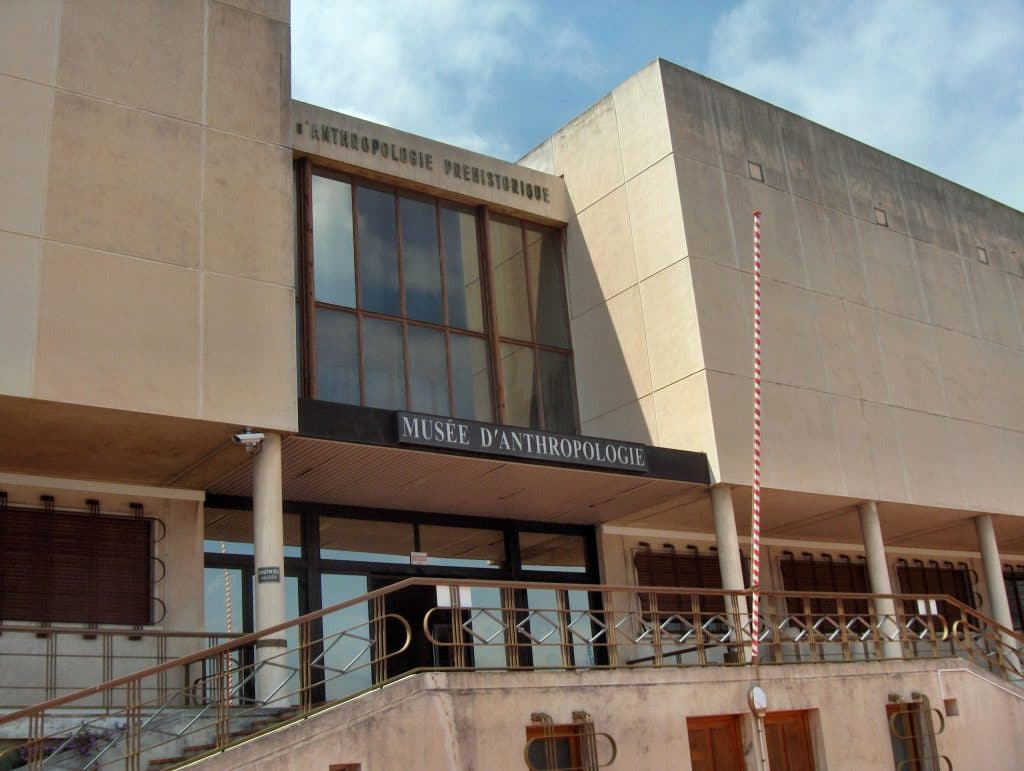 Source: Georges Jansoone (JoJan) / Wikimedia | CC0
Source: Georges Jansoone (JoJan) / Wikimedia | CC0At the turn of the 20th century Prince Albert I financed a series of excavations in the Grimaldi Caves, and the palaeontological and archaeological finds from these digs are on show in this museum, established by the prince shortly after.
You can find the Museum of Prehistory in the Jardin Exotique, in a purpose-built home designed by Monegasque architect Louis Rué, and opened in 1960.
The main room, dedicated to Albert I, displays the prehistoric tools and animal remains discovered in the gardens’ Grotte de l’Observatoire, as well as the Grotte du Prince, just over the border in Italy.
The showpiece though is the complete skeleton of a mammoth, excavated in Siberia and standing 3.3 metres tall and five metres long.
Website: https://map-mc.org/bienvenue-au-musee-danthropologie-prehistorique-de-monaco/
20. Saint-Martin Gardens
Exploring Vieux Monaco you can take a pause at the Saint-Martin Gardens on the Rock’s south-west side.
This became the first public garden in the principality when it opened in 1816, and was laid out as a project to provide work for hard-up residents during a famine.
The gardens’ winding paths cling to the side of the cliff, giving you glorious views of the Mediterranean and beckoning you through groves of Aleppo pines.
Some of the many other tree species growing in Saint-Martin Gardens are carob, fig, myrtle, stone pine, cypress and pistachio, combined with oleander, cacti, ferns and a variety of succulents.
Check out the monument for Prince Albert I (1848-1922), appropriately depicted at the helm of a ship.
21. Monaco Naval Museum
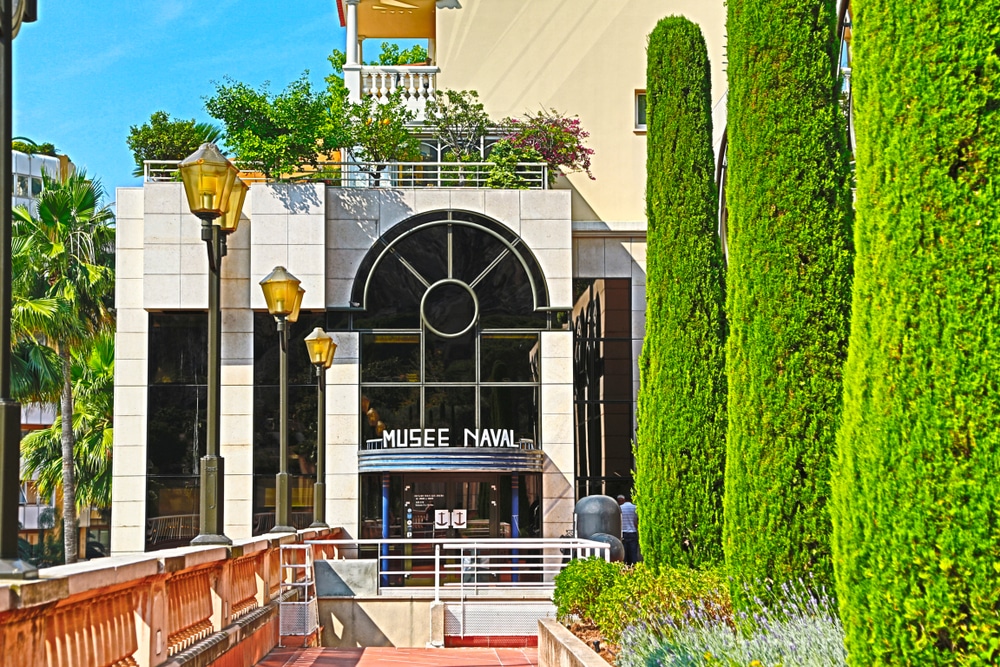 Source: Luziana5588 / shutterstock
Source: Luziana5588 / shutterstockThe globe-spanning model collection at this museum was partly accumulated by one Professor Claude Pallanca, dentist and husband to the wealthiest woman in Monaco, Hélène Pastor.
His impressive array of model ships was supplemented by pieces from the royal collection, including antique models handmade by Rainier I in 1874.
The exhibition features around 250 model ships, from a collection extending to more than 1,200.
In glass cases you’ll see classical Greek and Roman vessels, ocean liners like SS France and Titanic, aircraft carriers like the Niemitz and warships such as the Jeanne d’Arc (Pallanca served on the real one) and USS Missouri.
These are complemented by maritime artefacts and hundreds of paintings of ships and aircraft.
22. Larvotto Beach
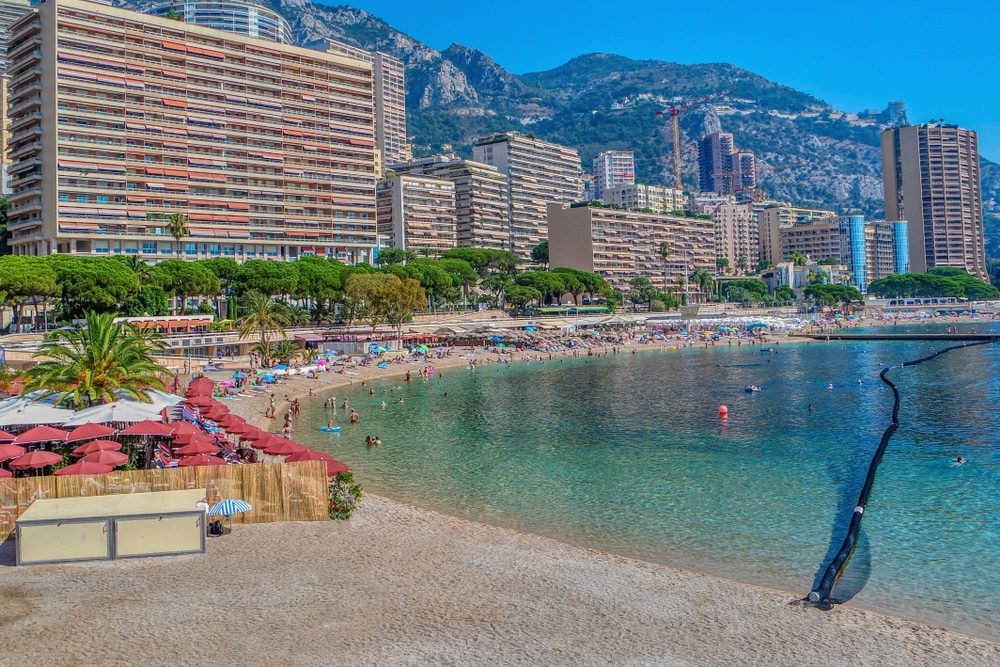 Source: Yury24 / shutterstock
Source: Yury24 / shutterstockNo exaggeration to say that waterfront space is at a premium in Monaco. At Larvotto Beach, in the residential district of the same name, you’ll find the last beach open to the public in the whole principality.
As much as anything Larvotto Beach is a good place to take a few steps out along the concrete pier and look back at the classic Monegasque cityscape of Modernist towers in tiers against the steep limestone slopes.
Either side of the pier, the beach has a private beach club to the east and a public section to the west, and is laid with coarse imported sand.
Both sides have gentle waters, safe for children and transparent on sunny days. You can use the pool ladders on the pier to lower yourself in for a swim.
23. Changing of the Guard
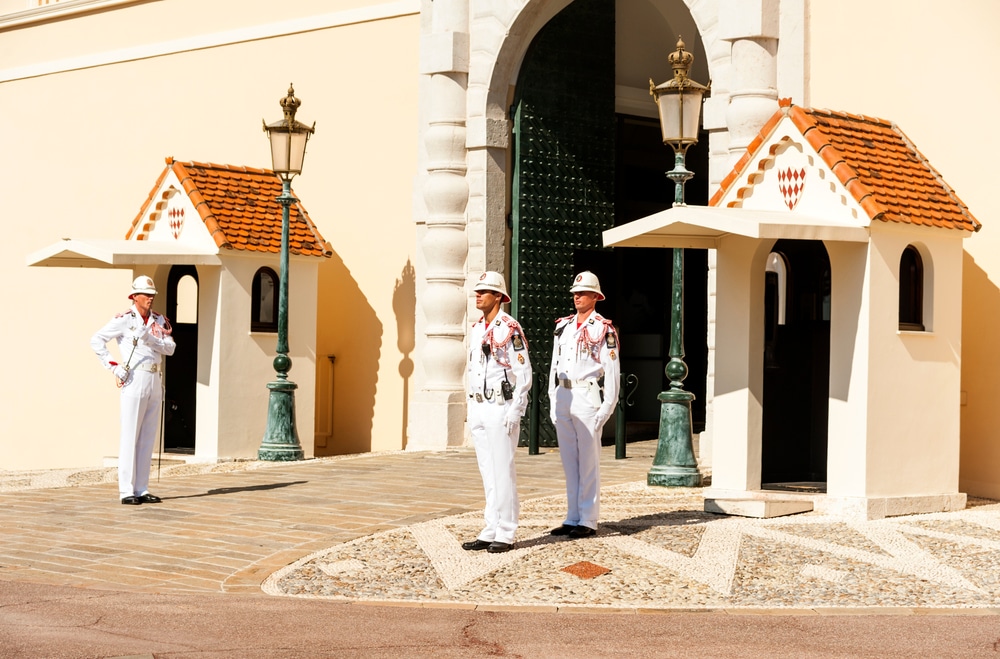 Source: Steven Phraner / shutterstock
Source: Steven Phraner / shutterstockWithout fail there’s a brief ceremony every day on Place du Palais to change the Palace Guards.
These soldiers are part of the small force, Compagnie des Carabiniers du Prince, set up in 1817 for the protection of the sovereign and the Prince’s Palace.
There are 124 in this company, and one of the interesting things about it is that it’s one of the few militaries in the world allowed to recruit foreigners, provided they’re francophones.
The motto on their flag reads “Honour, Loyalty and Devotion”, and you can catch the Changing of the Guard ceremony at precisely 11:55.
The basic ritual hasn’t changed in more than a century, and the guards wear white in summer and black during the winter months.
The guards also offer security for public events in the principality and escort and deliver messages for the Prince and visiting heads of state.
Website: https://www.palais.mc/en/sovereign-house/the-palace-guards-1-24.html
24. AS Monaco FC
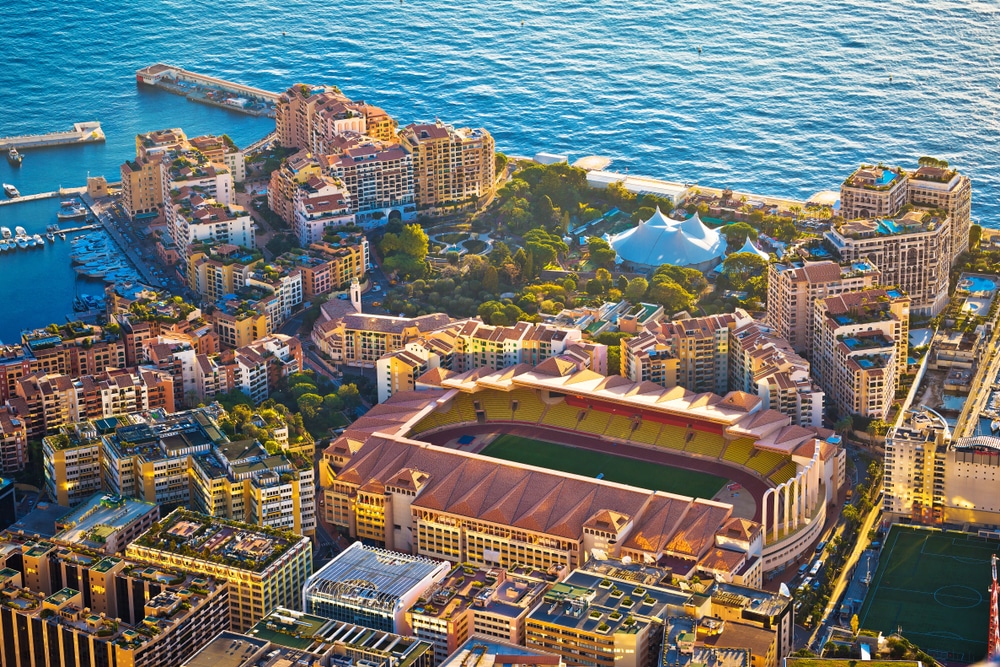 Source: xbrchx / shutterstock
Source: xbrchx / shutterstockThere are lots of noteworthy things about the principality’s football team. The first of these is that there’s even space for a stadium in Monaco’s cityscape.
Practically on the sea, Stade Louis II is tight to the border in the Fontvieille district, holding 16,360 and famous for the sequence of nine tall arches at the south-west end.
Also remarkable is that a team with such a small footprint could be so successful. But Monaco, playing in the French league system, have won Ligue 1 eight times, most recently in 2016-17, and have made an impact on the French footballing landscape in many more ways.
World Cup winners like Thierry Henry, Lilian Thuram and Emmanuel Petit came through the club’s youth system, and the influential manager Arsène Wenger was in charge for a successful period at the turn of the 1990s.
Matches almost never sell out at Stade Louis II, and there’s a whole menu of packages to help you watch top-flight French football in perfect luxury or closer to the action than you thought possible.
Website: https://www.asmonaco.com/
25. Grimaldi Forum
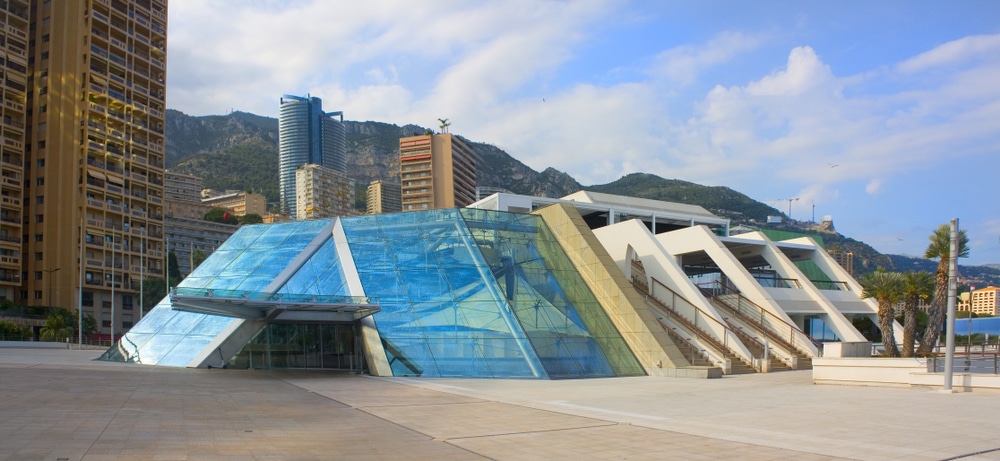 Source: lindasky76 / shutterstock
Source: lindasky76 / shutterstockWith a sleek profile and built from glass, concrete and steel, this multi-use exhibition centre opened on the waterfront in the Larvotto district in 2000.
The land for the Grimaldi Forum was reclaimed entirely from the Mediterranean, while the building has a smart modular design, able to host single large events or multiple functions at the same time.
The Monte-Carlo Philharmonic Orchestra and Les Ballets de Monte-Carlo often perform here, while this is also the traditional venue to draw the Champions League and Europa League group stages.
In April, maybe the big landmark on the calendar is Top Marques Monaco, one of the world’s premier luxury lifestyle exhibitions.
This event is attended by the likes of Bugatti, Ferrari and Aston Martin, but also the world’s most exclusive helicopter, yacht, jewellery and watch brands.
Website: https://www.grimaldiforum.com/